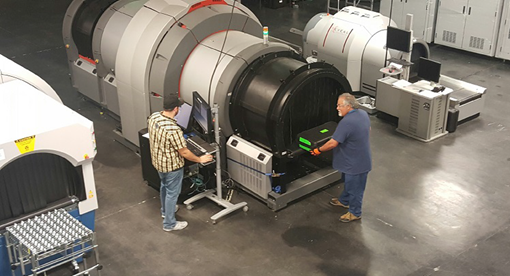 The threat of homemade explosives (HME) to the United States is not new, as evidenced by the 1995 Oklahoma City Bombing, and it is a threat that is continually evolving. Events after 9/11 such as the “shoe bomber” in 2001, the London Underground bombings in 2005, and the “underwear bomber” in 2009 emphasized the threat, and the benefits of a strong domestic program. There have been a number of high profile attacks recently, including the Paris attacks of Oct. 2015, the 2016 Brussels HME Suicide Bombings, and the Daallo Airlines Flight 159 bombing in Somalia. These attacks have further bolstered the need for a strong explosive characterization program, and have served to re-emphasize the benefits of the Homemade Explosives Identification, Detection and Mitigation (HEIDM) Program.
The threat of homemade explosives (HME) to the United States is not new, as evidenced by the 1995 Oklahoma City Bombing, and it is a threat that is continually evolving. Events after 9/11 such as the “shoe bomber” in 2001, the London Underground bombings in 2005, and the “underwear bomber” in 2009 emphasized the threat, and the benefits of a strong domestic program. There have been a number of high profile attacks recently, including the Paris attacks of Oct. 2015, the 2016 Brussels HME Suicide Bombings, and the Daallo Airlines Flight 159 bombing in Somalia. These attacks have further bolstered the need for a strong explosive characterization program, and have served to re-emphasize the benefits of the Homemade Explosives Identification, Detection and Mitigation (HEIDM) Program.
As these threats are often made of common commercial items, it is a challenge to distinguish true HME threats from the many innocent gels and liquids in personal baggage or cargo. The Homemade Explosives Identification, Detection and Mitigation (HEIDM) Program is a crosscutting portfolio, meaning the information collected in this program feeds into TSA to benefit several S&T programs, and has focus areas on:
- Explosive detection characterization
- Threat assessments and prioritization
- Tests, tools and methodologies relating to explosives research and risk mitigation
The HEIDM Program ensures the explosives community has a clear understanding of homemade and emerging explosive threats to:
- Improve detection technology
- Develop detection requirements
- Inhibit the unlawful use and manufacture of HMEs
- Provide a solid foundation for solutions to counter the threat, such as pre-planning tools for responders and event planners
It also examines the chemical and physical properties of these explosives to support the development of new screening capabilities. The program is developing decision support tools for responders to help mitigate HME incidents and to respond more efficiently and safely.
The HEIDM Program has successfully provided information to update the 2016 TSA Detection Standards, which resulted in equipment deployed with enhanced detection algorithms. The program provides full threat weight data to the TSA on explosives of interest for vendor algorithm development and to improve accuracy on transportation security equipment such as X-ray technologies and Advanced Imaging Technology.
